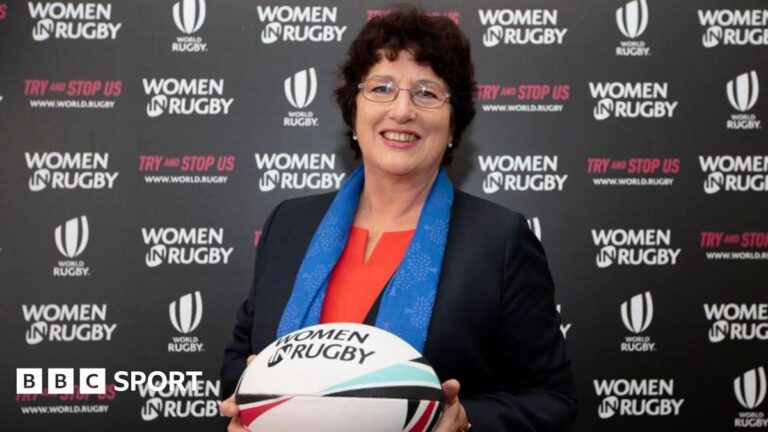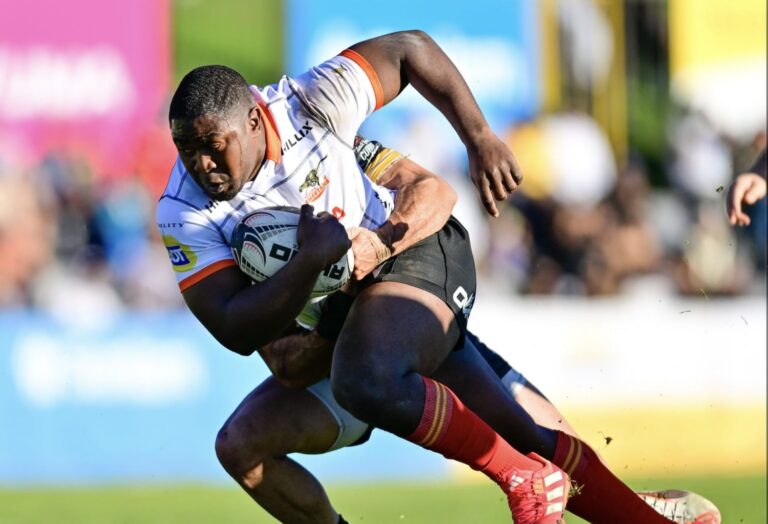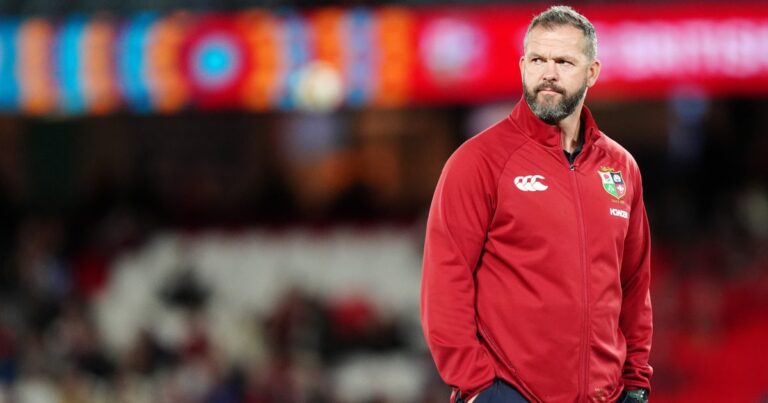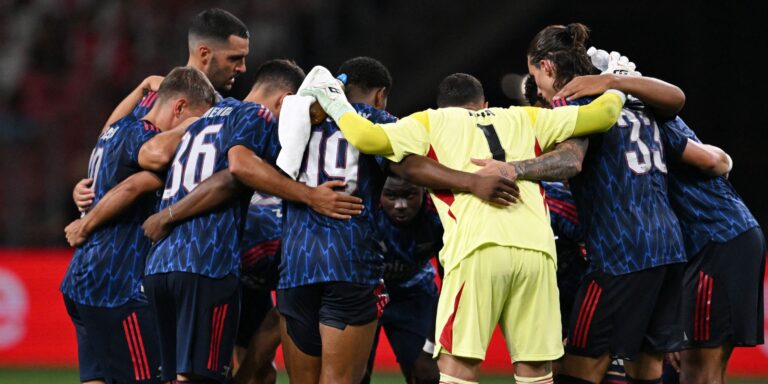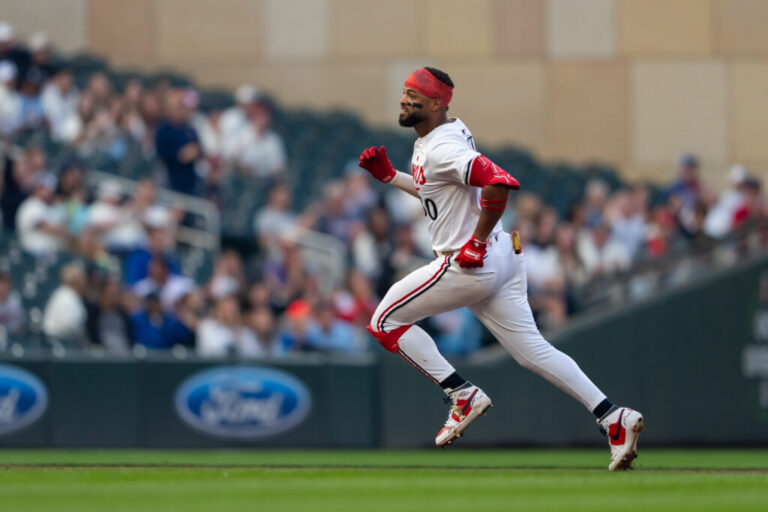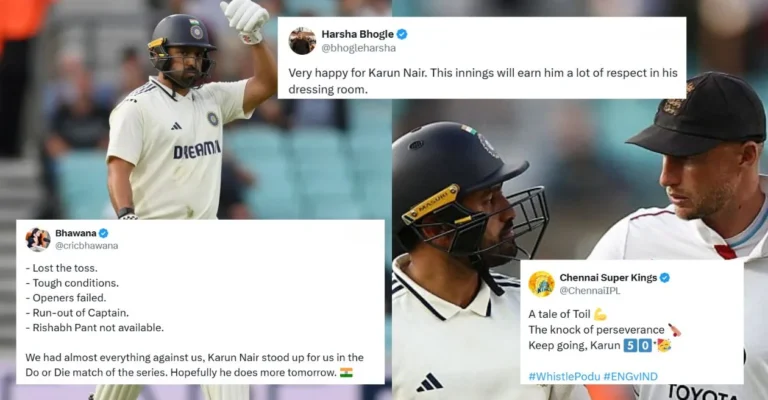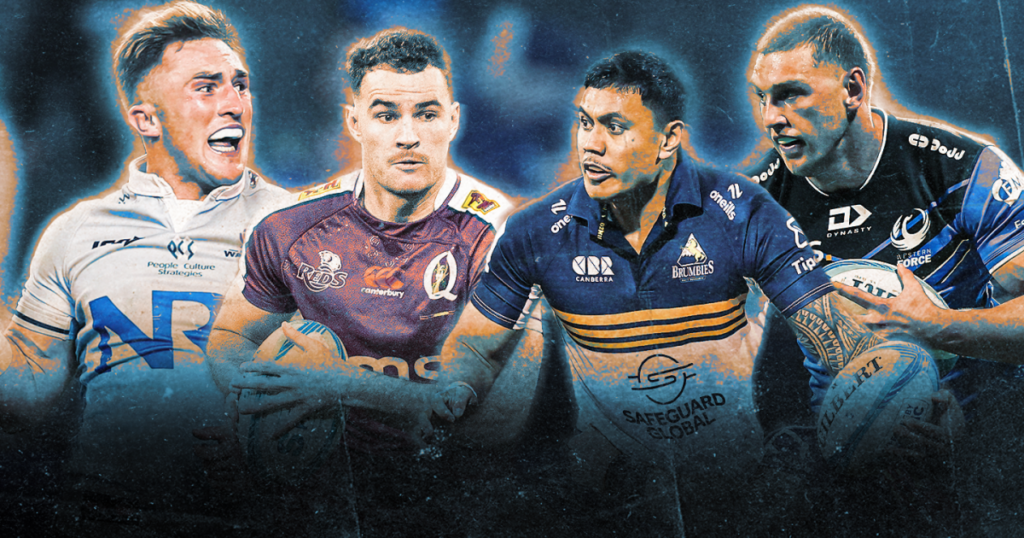
One man’s meat is another man’s poison, as the saying goes. The pros and cons of whether Australia should field three, or four or five franchises in Super Rugby has polarised supporters ever since the creation of two new expansion clubs: the Western Force back in 2005, and the Melbourne Rebels six years later.
The room for a sensible middle ground has been squeezed as voices fled to one end of the spectrum or the other in the fiercest of debates. In the red corner, Eddie Jones made the case for cuts while he was still head coach of England on the aptly named Rugby Ruckus podcast.
“All the political infighting tends to go away when you start winning,” he said. “If I was Australian rugby, I’d just be focusing on how you get back winning.
“Super Rugby went from three to five teams, probably not in the best [interests] of Australian rugby and that helped loosen the club competition.
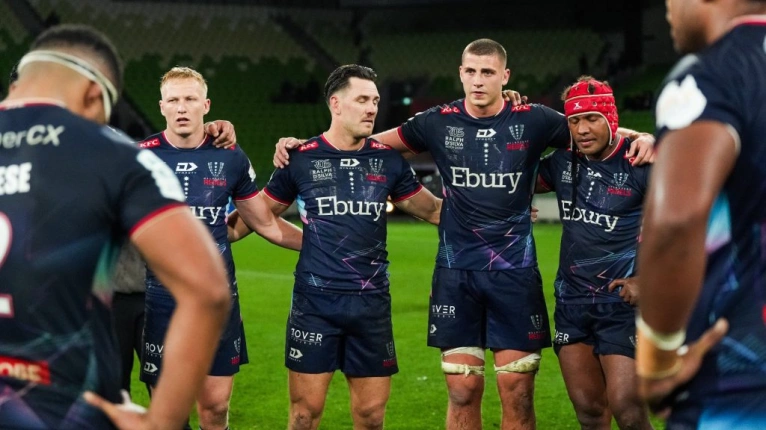
“As a national coach, you want your best players playing together. And for me, that’s having three teams, and three teams where there’s competition to get into those squads and you battle each other.
“I think if you spread it out too far, you can always try and grow the game but does that add to the national team?
“If the Wallabies win, people will follow rugby in Australia. Everyone loves a winner.”
The ‘meat’ of the three- or four-team theory is that it concentrates more good players into fewer squads, creating intense competition for places and a tougher mentality. As franchises become stronger and deeper they create more chances of winning, and specifically of beating teams based across the Tasman. They build combinations which can progress into the Wallabies with minimal fuss or need for adjustment at the higher level of competition.
The proof of the pudding has been in the eating. The Rebels only had one winning season in 16, and that was in Covid-truncated Super Rugby AU 2020. The Force fared no better, with no winning seasons in 18 attempts. An important spin-off was the dilution of strength in the three existing franchises based in Canberra, Sydney and Brisbane. Up until the Force start-up in 2006, Australian teams had either won, or made the final of Super Rugby in six of its 10 seasons. Since then, those numbers have dropped to four in 17, and they have been reflected in full on the international stage in terms of results against their nearest neighbours.

The logic of the red corner is inarguable: as Australia has expanded its Super Rugby representation, it has weakened the strength of its teams and lost touch with its understanding of what a ‘winning culture’ means, all the way through to the Wallabies. If the Wallabies don’t win, the public showcase fails and rugby’s star falls further in a cut-throat home sports market.
Rugby Australia has been itching to drop at least one of its franchises from Super Rugby for the past five years. The outcome of its first attempt to axe the Force, by force, was disastrous. On 11 August 2017 then-ARU chairman Cameron Clyne announced, “The ARU board has today made the decision to discontinue the Western Force as the Super Rugby competition reverts to 15 teams for the 2018 season.”
The decision provoked a huge backlash in Western Australia. Even at the end of its first season in 2006, the Force had finished with the highest average home attendance of any Australian franchise despite finishing bottom of the table, and boasted the largest membership base with 16,000 members. When the axe fell 11 years later, they were saved by the intervention of billionaire entrepreneur Andrew Forrest, who offered AUD $50m of his own money to save the franchise, or fund a rebel Indo-Pacific tournament to keep it alive and very much playing. By 2020, the Force were back in the fold.
The argument from the blue corner is founded on spreading the rugby gospel and creating new professional pathways in a previously unmined area of the country. The ‘poison’ lies in shrinkage – or in the even more arsenic notion of ‘shrinking to greatness’. In the same week the Wallabies were walloped 57-22 by the All Blacks at Eden Park in August 2021, the Sydney Rugby Union expelled Penrith from its Shute Shield competition, ring-fencing the remaining six clubs while blocking a valuable road into the Western Sydney athletic hotbed.
Rugby Australia finally summoned the gumption to make a second effort at reducing to four in May 2024 by dissolving the Rebels. The club had debts exceeding AUD $23m, including an $11.5m debt to the tax office, a report from the private administrator Stephen Longley remarking the Rebels appeared to have been trading while insolvent for five years.

At the same time, according to Melbourne-based Kiwi journalist Geoff Parkes writing on The Roar: “At a pre-season Rebels sponsor evening on November 24 last year, Rugby Australia CEO Phil Waugh told the local audience how Victoria was ‘leading the way’ with regard to connecting the amateur and professional game, using the catch-cry, One team from club to country. Yet within a fortnight, Rugby Australia had switched paths. As their actions would increasingly show, they had determined that the Rebels were no longer ‘family’.”
Is the cost-cutting exercise RA has undertaken worth the chop to pathways? Amid a storm of suit and counter-suit, it seems it will be left to the courts to decide the legal accountability in Aussie, and whether five can be cut to four. As Parkes concluded in his article: “There is a rugby demographic in the outer suburbs of Melbourne waiting to be tapped into, to deliver many more Wallabies and Wallaroos. With traditional private school pathways increasingly populated by NRL and AFL interests, Australian rugby can’t wait for the lawyers to conduct their business. It needs these kids back in the rugby family today.”
It is certain there will be far more chance of sustaining a winning Wallaby culture with more intense competition for squad places at Super Rugby level. It is extraordinarily hard to teach people how to win as internationals when they have only ever learned how to lose on the tier below.
It is time for the spell to be broken, and the process starts with beating the Kiwis regularly in Super Rugby. The two biggest beneficiaries from the demise of the Rebels will be the traditional twin powerhouses of Queensland and New South Wales, and they have made strides in recruitment where it really matters, in the front five forwards.
New Waratahs head coach Dan McKellar is a forwards specialist who will now have Taniela Tupou, Isaac Aedo-Kailea to add to Angus Bell and injury returnee Dave Porecki in his front-row, and all four should make Joe Schmidt’s Lions squad next July. The Reds meanwhile have beefed up their stocks with the addition of two Rebels who will really suit the Les Kiss style in the shape of Lukhan Salakaia-Loto and Josh Canham. Both can run and handle while attending to the basic second row chores at lineout and scrum.
With Ryan Smith and Angus Blyth supporting LSL and Canham, Kiss will be free to discover just how good Seru Uru can be at six for club and country. Uru started on the blindside flank in the Wallabies’ win over Wales and it was surprising he did not retain his place the following week against Scotland.
The Queenslander managed to pack four lineout takes, 10 carries, 10 tackles with no misses and one breakdown steal into his 59 minutes on the Principality Stadium pitch. If there is one word which encapsulates Uru’s play for a such a big man, it is ‘speed’: speed into the air at lineout time, speed leading the line up in defence and on defensive sprints in cover, speed at presenting the ball in contact.
The number of metres made rarely presents the full picture of a ball-carrier’s value to his side. Like any good Kiss-trained forward, Uru presents the ball very quickly in contact, with nine of his 10 carries producing lightning-quick ball.
Instant delivery at the ruck allows Max Jorgensen and Andrew Kellaway in the first instance, and Jorgensen and Tom Wright in the second, to curl around the right corner and find space out wide.
In a pack based around Will Skelton, you need at least two lineout targets with outstanding speed off the ground, and Nick Frost and Uru supplied that against Wales.
Uru is very quick to get in front of Frost to block on the short side of the catch, and Skelton’s power does the rest on an unstoppable rumble to the line.
Uru’s speed enables him to make some great recovery sprints and double efforts on defence.
In the first clip, his task is to turn out from inside defence and lengthen stride to match the Wales nine. Secondly, he is free to join the choke tackle and ensure the outcome is a turnover scrum. In the second clip, he is leading the Wallaby line speed initially, then peeling away to win a breakdown pilfer penalty once the first effort is over.
Meat or poison, the reduction to four franchises can only help the Wallaby endeavour to hunt the British & Irish Lions next July. Australia always used to be the ultimate sporting winners, maximising their resources until success against the odds became not just possible, but instead a probability.
Those days in Australian rugby are long gone, but a greater concentration of talent in the tight five forwards will grant the Waratahs and Reds especially a shot at meeting their Kiwi opponents on even terms. It may even give them a chance to win the tournament in toto. Winning against teams from New Zealand has become a habit sadly forgotten in Aussie rugby circles.
If those two traditional strongholds can get their houses from numbers one-five in order, they may yet unearth an unexpected platform from which Australia can attack the Lions. They may be able to establish Uru and Skelton as part of a key back-five combination in the process. Long-term poison be damned, the Wallabies need to eye the meat sitting right in front of them.
